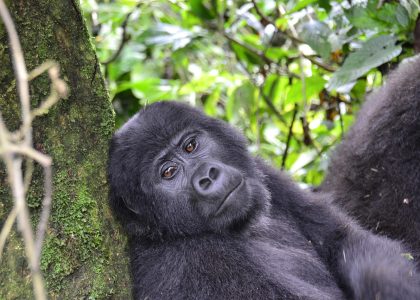Continuing our Wazimba Travel Kenya series, we invite you to discover the stunning coastal treasures that perfectly complement your safari adventures. While Kenya’s wildlife parks rightfully capture much attention, the country’s 536-kilometer coastline along the Indian Ocean offers a captivating blend of pristine beaches, rich cultural heritage, and aquatic adventures that make it an essential part of any comprehensive Kenyan journey.
Mombasa: Gateway to Coastal Wonders
As Kenya’s second-largest city and primary port, Mombasa serves as the perfect introduction to coastal Kenya. The heart of the city, Mombasa Old Town, transports visitors through centuries of maritime history with its narrow, winding streets and distinctive architecture that blends African, Arabic, and Portuguese influences.
Old Town Highlights:
- Fort Jesus: This imposing 16th-century Portuguese fortress now houses a fascinating museum chronicling the region’s tumultuous history. Wazimba Travel arranges guided tours that bring to life the fort’s role in the spice trade and regional conflicts.
- Spice Markets: Lose yourself in the aromatic spice markets where traders have sold their fragrant wares for centuries. Our local guides help you identify exotic spices and explain their culinary and medicinal uses.
- Artisan Workshops: Tucked within Old Town’s labyrinthine streets, skilled craftspeople continue traditions of woodcarving, jewelry making, and textile arts. We connect you with authentic artisans away from the tourist traps.
Beyond the historic center, Mombasa pulses with vibrant urban energy. From the iconic Tusks on Moi Avenue to the bustling Kongowea Market, the city offers a fascinating contrast to the tranquility of Kenya’s wildlife parks. Many Wazimba Travel guests find that spending two days exploring Mombasa provides an excellent cultural counterpoint to their safari experiences.
Diani Beach: Kenya’s Coastal Crown Jewel
Just 30 kilometers south of Mombasa lies Diani Beach, consistently ranked among Africa’s most beautiful beaches. Its 10 kilometers of powder-white sand, fringed by lush coconut palms and washed by the brilliant turquoise Indian Ocean, create a postcard-perfect tropical paradise.
Wazimba Travel Tips for Diani:
- The northern end of the beach offers more seclusion and fewer vendors
- Early mornings provide the most peaceful beach walks and spectacular sunrises
- We recommend staying at least three nights to fully embrace Diani’s relaxed pace
- Our partnerships with local operators ensure the highest safety standards for all water activities
What sets Diani apart from other beach destinations is its remarkable diversity of experiences. Beyond simply soaking up the sun, our guests enjoy:
Water Adventures:
- Snorkeling and diving at the nearby Kisite-Mpunguti Marine Reserve, home to dolphins, turtles, and over 250 fish species
- Kite surfing lessons along the beach’s consistent trade winds (June to September offers optimal conditions)
- Traditional dhow sunset cruises with fresh seafood dinners prepared onboard
- Deep-sea fishing expeditions targeting marlin, sailfish, and dorado
Remarkably, Diani also offers wildlife encounters without leaving the beach area. The endangered black-and-white colobus monkeys inhabit the coastal forests just behind the beach, often making appearances around hotel grounds. Wazimba Travel arranges guided walks with the Colobus Conservation organization to learn about these fascinating primates and efforts to protect them.
Lamu Island: Timeless Swahili Sanctuary
For travelers seeking a deeper immersion into Swahili culture, we highly recommend the UNESCO World Heritage site of Lamu Island. This car-free paradise along Kenya’s northern coast has remained largely unchanged for centuries, preserving authentic Swahili architecture and traditions.
Lamu Town Experiences:
- Wander through the oldest continually inhabited Swahili settlement in Kenya
- Marvel at the intricate wooden doors and coral stone buildings dating back to the 14th century
- Visit the Lamu Museum and traditional dhow building workshops
- Experience the gentle pace of life where donkeys remain the primary mode of transportation
Lamu’s rhythms follow ancient patterns—the call to prayer echoing from numerous mosques, fishermen returning with their daily catch, artisans practicing time-honored crafts. Our guests consistently describe Lamu as offering the most authentic cultural experience in coastal Kenya.
While accommodations range from humble guesthouses to luxurious converted Swahili mansions, Wazimba Travel particularly recommends the boutique properties in Shela village. Here, the magnificent beach stretches for 12 kilometers, often with few other visitors in sight. The meeting point of traditional Swahili culture and gentle Indian Ocean waves creates an atmosphere unlike anywhere else in Kenya.
Watamu and Malindi: Marine Wonders and Italian Influence
Further north along the coast, the twin destinations of Watamu and Malindi offer their own distinct coastal charms.
Watamu Marine National Park: Protected since 1968, this underwater paradise features remarkable coral formations and crystal-clear waters. During low tide, natural pools form among the exposed coral gardens, creating perfect conditions for even novice snorkelers to observe vibrant marine life. For certified divers, deeper sites harbor larger pelagic species and dramatic coral walls.
Malindi’s Multicultural Heritage: With substantial Italian influence dating back decades, Malindi blends African, Arab, and European cultures. This unique fusion appears in everything from the local cuisine (where pasta sits comfortably alongside traditional Swahili dishes) to the distinctive architecture. The Vasco da Gama Pillar marks where the famous Portuguese explorer made landfall in 1498, while the nearby Gede Ruins reveal the remains of a once-thriving 13th-century Swahili town reclaimed by forest.
Wazimba Travel often recommends splitting time between these two complementary destinations, using Watamu as a base for marine exploration and Malindi for cultural experiences and culinary adventures.
Swahili Culture and Cuisine: The Soul of Coastal Kenya
What truly distinguishes Kenya’s coast is its distinct Swahili culture—a fascinating blend of Bantu, Arabic, Persian, Indian, and European influences developed over centuries of maritime trade.
Cultural Experiences We Arrange:
- Cooking classes focused on traditional Swahili cuisine, which masterfully combines African staples with Arabic spices and Indian techniques
- Visits to local homes where families demonstrate palm leaf weaving, coconut oil production, and other traditional crafts
- Participation in community music and dance performances featuring the distinctive taarab musical style
- Guided tours of historic mosques and churches that showcase the region’s religious diversity
Must-Try Coastal Dishes:
- Wali wa Nazi: Coconut rice that accompanies most coastal meals
- Samaki wa Kupaka: Fresh fish grilled and then simmered in a rich coconut curry
- Kaimati: Sweet dumplings soaked in cardamom syrup
- Mahamri: Pillowy triangle-shaped doughnuts flavored with cardamom and coconut milk
- Mshikaki: Marinated meat skewers grilled over open flames
Our guests consistently rate these culinary experiences among their trip highlights, with many arranging additional cooking lessons to master favorite dishes before returning home.
Wazimba Travel Recommendations for Coastal Kenya
When to Visit:
- December to March offers the warmest temperatures and clearest waters for marine activities
- April to June brings occasional rains but fewer tourists and lush, green landscapes
- July to November provides comfortable temperatures and excellent conditions for water sports
Combining Coast and Safari:
- We recommend experiencing the coast after your safari—the perfect relaxing finale
- Consider at least 4-5 days along the coast to experience multiple destinations
- Our seamless transfers between coast and safari regions eliminate logistical hassles
Practical Considerations:
- Coastal areas are predominantly Muslim; respect local customs by dressing modestly in towns (beach attire is fine on resort beaches)
- Bring reef-safe sunscreen to protect your skin and the fragile marine environment
- Light, breathable clothing is essential for the coastal humidity
- We provide reef shoes for exploring exposed coral areas during low tide
Kenya’s coast offers the perfect complement to your wildlife safari—a place where ancient cultural traditions meet natural beauty, where adventure activities transition seamlessly to blissful relaxation. While many visitors focus exclusively on Kenya’s famous parks and reserves, our most satisfied guests consistently include coastal experiences in their itineraries, returning home with a more complete understanding of Kenya’s remarkable diversity.
In the next article of our series, we’ll explore opportunities for meaningful cultural immersion throughout Kenya, from Maasai village visits to urban experiences that connect you with Kenya’s contemporary arts scene. Stay tuned to discover how cultural encounters add depth and perspective to your Kenyan adventure!
Have questions about coastal Kenya? Want to include these seaside experiences in your Kenyan journey? Contact the Wazimba Travel team for expert advice and customized itineraries that showcase the best of Kenya’s magnificent coast.






